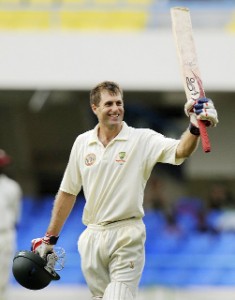
In ST.JOHN’S
IT was a day on which the West Indies needed to be as sharp and as flawless in the field as they were in the first Test at Sabina Park.
On a pitch in the Sir Vivian Richards Stadium inaugural Test seemingly transplanted intact from the Antigua Recreation Ground, that field of batsmen’s dreams a few miles away, their bowlers plugged away with much of their newly-discovered discipline. But they lacked the support they enjoyed in Kingston that was even more essential here to counteract the disadvantage of the conditions.
The usually sure-handed Runako Morton put down a chance at point he would back himself to take ten times out of ten when the dogged Simon Katich square-cut Fidel Edwards straight to him, still 10 runs short of his eventual hundred.
Denesh Ramdin couldn’t gather a leaping leg-side catch when Mike Hussey was four. The prolific left-hander only added another six but it was a rare mistake by the ‘keeper that epitomised the decline in West Indies standards.
Misses, fumbles and deflections on the ground probably cost as many as 20 runs and often eased the pressure of a sequence of scoreless deliveries. Ramnaresh Sarwan, again captain in the continuing absence of Chris Gayle, and Jerome Taylor, seemingly conscious of the back strain to kept him out of the first Test, were the main culprits.
At Sabina, there were only two no-balls and not a wide in Australia’s 126.5 first innings overs. Now, in 82 overs, there were seven no-balls and a wide delivery from Dwayne Bravo that passed feet away from Ramdin on its way to the boundary.
It emphasised the point about consistency made by Australia’s coach Tim Neilsen prior to the match – and, no doubt, by his West Indies counterpart, and fellow Australian, John Dyson as well.
The difference between the teams at present, Neilsen noted, is the ability to execute their skills and reproduce them “over and over again.”
The position is not dissimilar to that of the first Test at Sabina. On a friendlier batting pitch, the West Indies will find it harder here to restrict Australia to a total of under 500, as they did there – and that will place heavy demands on batting that, in the continuing absence of Gayle, has yet another combination to start things off against one of the most potent new balls attacks in the game.
If the strange make-up of the final eleven was predicated by the announcement of the overall squad, the inclusion of Xavier Marshall was a choice as bewildering as any ever made by our often bewildering selection panels.
When he was head coach, Bennett King was so seduced by Marshall’s potential he pitchforked him into the VB Series in Australia and the Test series in Sri Lanka in 2005. He was 18 and clearly not ready.
Since then, his appearances for Jamaica have been spasmodic and unconvincing. He was not even chosen for the eleven for the Challenge final against Trinidad and Tobago last month. His first-class average is 25. He is yet to score a hundred.
Still only 22, Marshall may yet become a worthy Test opener. At present, he is no more ready to take the leap to the highest level than he was three years ago.






